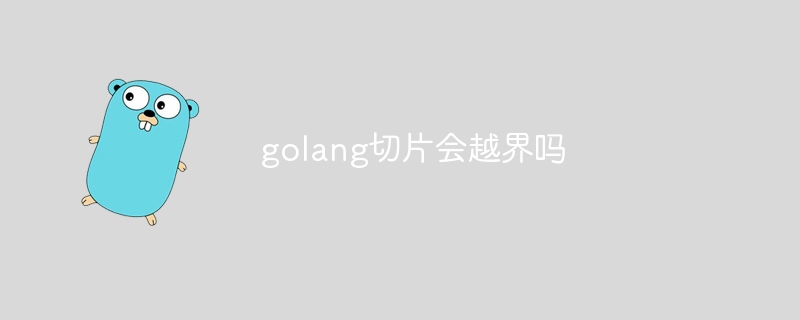Home >Backend Development >Golang >Will golang slicing cross the boundary?
Will golang slicing cross the boundary?
- 小老鼠Original
- 2023-08-08 16:05:211360browse
Golang slices will not cross the boundary. Go language slicing is safe and the underlying array will not go out of bounds. However, when using slices, you need to pay attention to the problem of out-of-bounds access, especially when iterating and modifying the slice length. Through good coding and using built-in functions to check the length and capacity of the slice, you can avoid the occurrence of out-of-bounds access problems, and Ensure program stability and reliability.

The operating environment of this tutorial: Windows 10 system, go1.20.1 version, Dell G3 computer.
In the Go language, slice is a flexible and convenient data structure that can grow and shrink dynamically. However, when using slices, there are sometimes concerns about being able to perform out-of-bounds access, that is, accessing elements that exceed the capacity of the slice. So, will golang slicing cross the boundary?
First, let us understand the structure of slices. A slice consists of three parts: a pointer to the underlying array, the length of the slice, and the capacity of the slice. The length represents the current number of elements in the slice, while the capacity represents the maximum number of elements that the slice can accommodate without reallocating memory.
When we access through a slice, the Go compiler checks whether the accessed index is out of bounds. If the index is greater than or equal to the length of the slice, or less than 0, the compiler will throw a runtime error, namely an index out of bounds exception. This is because the underlying array of slices is stored at contiguous memory addresses, and indexes are used to access these memory addresses.
Although the Go language has a built-in out-of-bounds checking mechanism, in some cases, we may encounter out-of-bounds access problems. For example, when we iterate through slices or manually modify the length of a slice, it is possible to cause an out-of-bounds error.
When we iterate over a slice, make sure that the iterator does not exceed the length of the slice. A common mistake is using the wrong slice length, resulting in accessing elements outside the scope of the slice. In this case, the compiler will not give an error message, so we need to carefully check and verify the iterator value.
Another situation that may lead to out-of-bounds access is to manually modify the length of the slice. When we use the `append()` function to add elements to a slice, if the capacity of the slice is not enough, the Go language will automatically allocate a larger underlying array and copy the original elements to the new array. However, this may cause the slice's index to go out of bounds. Therefore, before modifying the slice length, we should first check whether the slice's capacity is sufficient.
In order to avoid the problem of cross-border access, we can take some measures. First, we should always keep the slice length and capacity correct. At the same time, when using slice iteration, we need to ensure that the value of the iterator does not exceed the length of the slice. In addition, we can also use the `len()` and `cap()` functions to get the length and capacity of the slice for checking during encoding.
In summary, Go language slicing is safe and the underlying array will not go out of bounds. However, when using slices, we need to pay attention to the problem of out-of-bounds access, especially when iterating and modifying the slice length. By good coding and using built-in functions to check the length and capacity of slices, we can avoid out-of-bounds access problems and ensure program stability and reliability.
The above is the detailed content of Will golang slicing cross the boundary?. For more information, please follow other related articles on the PHP Chinese website!

